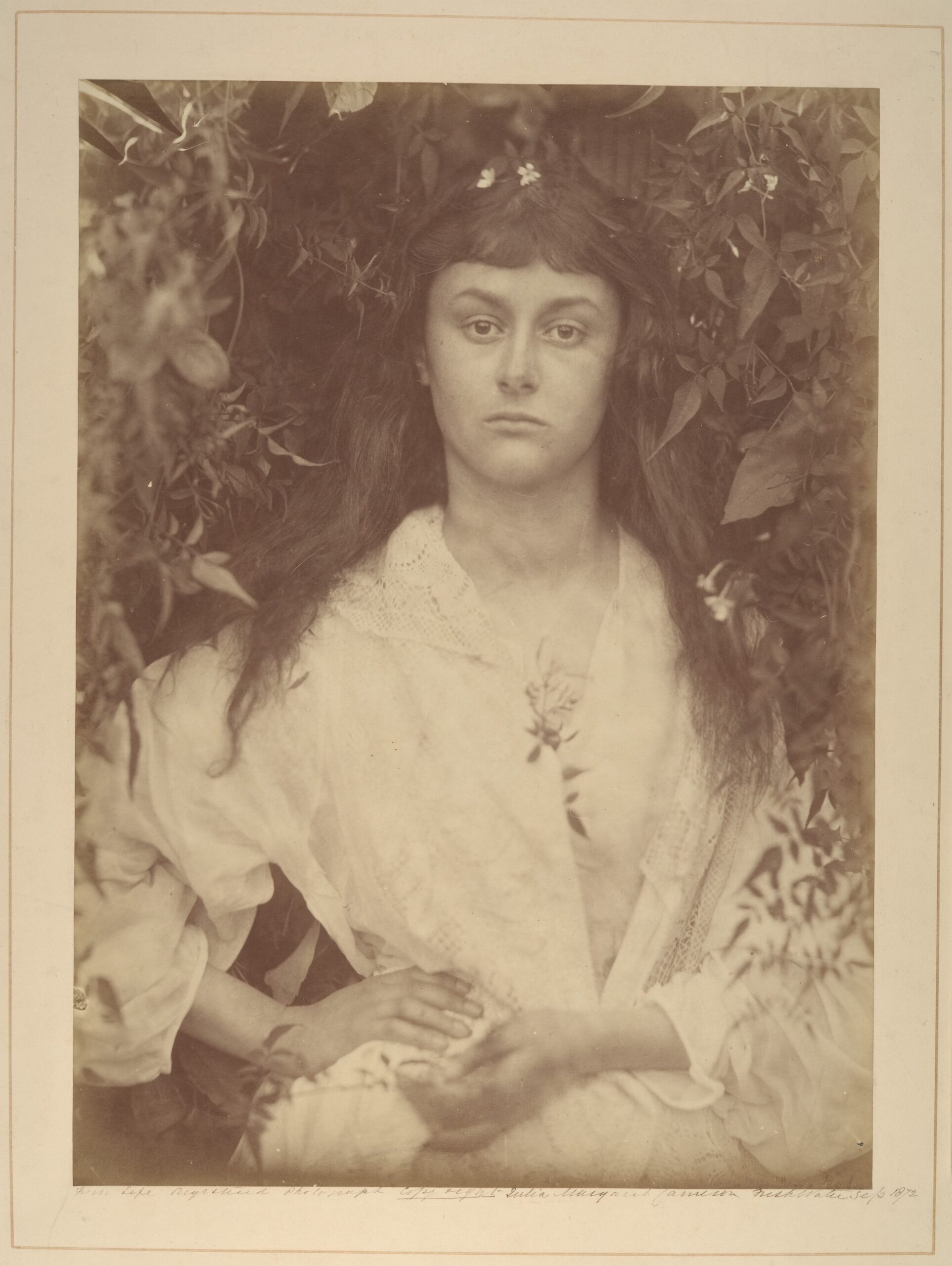
In a new exhibition the National Portrait Gallery, the of works by Julia Margaret Cameron and Francesca Woodman are brought together across time and space
Between 1866 and 1868, Julia Margaret Cameron made a portrait of Mary Pinnock as Daphne, the nymph who was transformed into a tree to escape the clutches of Apollo. In 1980, Francesca Woodman made a series of images of herself amongst trees, or partially wrapped in tree bark. They are untitled, but hung beside Cameron’s Daphne in the National Portrait Gallery exhibition Portraits to Dream In, they prompt the viewer to read the ancient narrative into them too. Curator Magdalene Keaney calls this a “proposition”, and it’s one of four she has created by hanging Cameron’s mythical portraits alongside a group of Woodman’s works. The subjectivity of these comparisons exemplifies the ethos of the exhibition, which brings these two photographers together across time and space.
Portraits to Dream In is remarkable in that it explicitly rejects biographical readings of these artists and their work, readings which often swallow the appraisal of art by women. The formalism that guides the installation pairs works that look similar, sometimes explicitly, as in a salon-style wall filled with images of angels and angel-inspired figures, and other times less tangibly, as in a pairing of Cameron’s Sadness (depicting Ellen Terry leaning against a wall with a dotted wallpaper) and Woodman’s Polka Dots #5, which features a figure in a dotted dress. Looking at the dotty images together, I noticed elements of each I hadn’t before, and felt confidently steered by an unusually evident curatorial eye.



